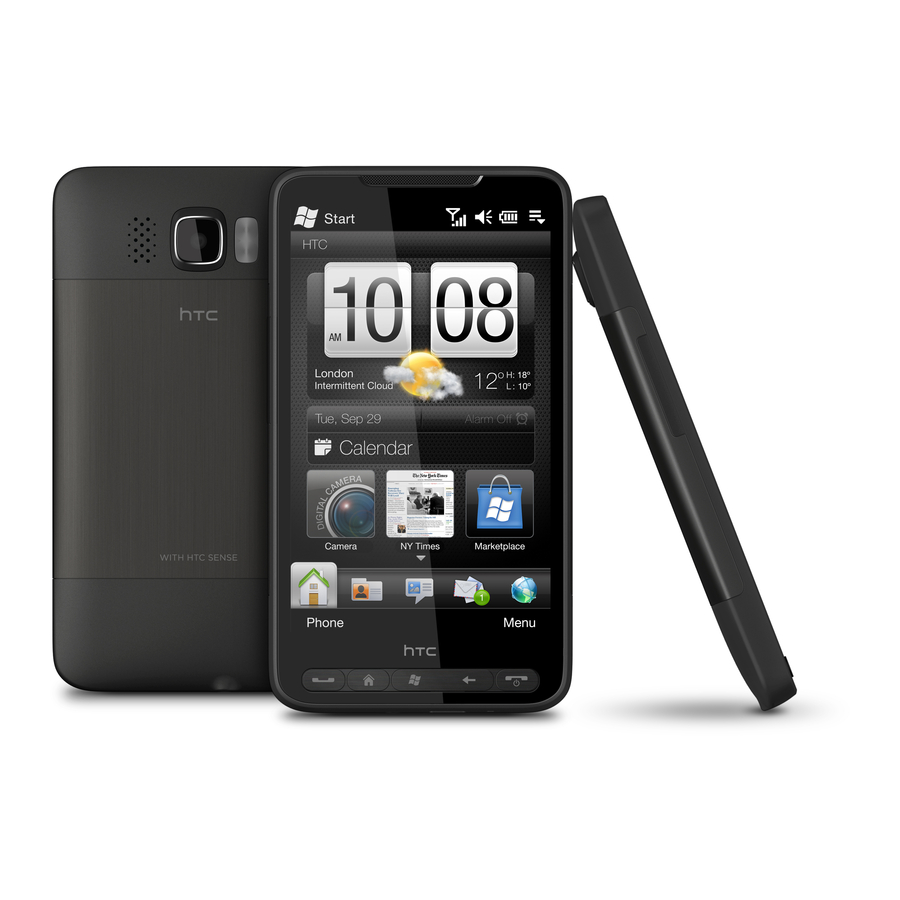HTC HD2 빠른 시작 매뉴얼 - 페이지 38
{카테고리_이름} HTC HD2에 대한 빠른 시작 매뉴얼을 온라인으로 검색하거나 PDF를 다운로드하세요. HTC HD2 44 페이지. Lcd & touch screen repair
HTC HD2에 대해서도 마찬가지입니다: 사용자 설명서 (31 페이지), 빠른 시작 매뉴얼 (44 페이지), 수리 매뉴얼 (4 페이지)

Quick Start Guide
PREVENTION OF HEARING LOSS
CAUTION: Permanent hearing loss may occur if
earphones or headphones are used at high volume for
prolonged periods of time.
NOTE: For France, Earphone (listed below) for this device have been
tested to comply with the Sound Pressure Level requirement laid
down in the applicable NF EN 50-1:000 and/or NF EN 50-
:00 standards as required by French Article L. 5-1.
•
Earphone, manufactured by HTC, Model RC E10.
SAFETY IN AIRCRAFT
Due to the possible interference caused by this product to an
aircraft's navigation system and its communications network, using
this device's phone function on board an airplane is against the law
in most countries. If you want to use this device when on board an
aircraft, remember to turn off your phone by switching to Airplane
Mode.
ENVIRONMENT RESTRICTIONS
Do not use this product in gas stations, fuel depots, chemical
plants or where blasting operations are in progress, or in potentially
explosive atmospheres such as fuelling areas, fuel storehouses,
below deck on boats, chemical plants, fuel or chemical transfer or
storage facilities, and areas where the air contains chemicals or
particles, such as grain, dust, or metal powders. Please be aware
that sparks in such areas could cause an explosion or fire resulting in
bodily injury or even death.
EXPLOSIVE ATMOSPHERES
When in any area with a potentially explosive atmosphere or where
flammable materials exist, the product should be turned off and
the user should obey all signs and instructions. Sparks in such areas
could cause an explosion or fire resulting in bodily injury or even
death. Users are advised not to use the equipment at refueling
points such as service or gas stations, and are reminded of the need
to observe restrictions on the use of radio equipment in fuel depots,
chemical plants, or where blasting operations are in progress. Areas
with a potentially explosive atmosphere are often, but not always,
clearly marked. These include fueling areas, below deck on boats,
fuel or chemical transfer or storage facilities, and areas where the
air contains chemicals or particles, such as grain, dust, or metal
powders.
